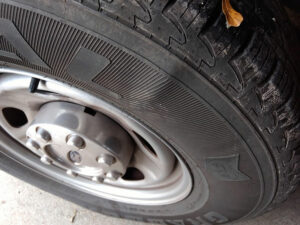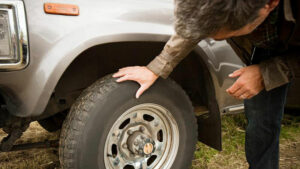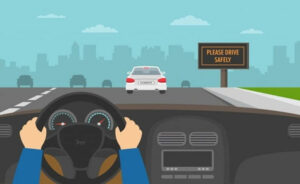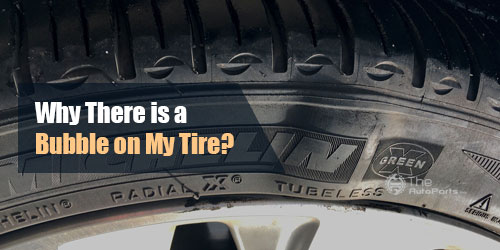Certain car issues demand the attention of car enthusiasts which are often ignored by them. One of them is tire bubbles or bulges that are overlooked by car drivers. When ignored or left unresolved, these things might impede safety and damage the car greatly. These issues often lead to egg-shaped bubbles on the sides of the tires caused due to air leakage within the tires. Continue reading the article that highlights everything that leads to air bubbles on the tire and discuss ways to resolve the issue:
Why There’s a Bubble on the Tire’s Sidewall?

As The Inner Layer Of The Tires Undergoes Damage, You’ll Notice Bubbles On Them.
A car tire consists of multiple layers and maintains its air pressure via the inner lining. Usually, this air is devoid of any extra material generally given to the outer layer having a strong type of rubber that keeps it air-tight. Even if the inner layer is made of strong materials, it is susceptible to rupture and air leaks. Small pockets of air gradually become big and become visible due to excess pressure and other forces. Air coming out from the inner layers moves towards the outer ones. All the air enters a spot where the rubber has worn out and has become weak, known as sidewall. The smooth tire region present within the tread and wheel rim is known as sidewall.
What Causes Air Bubbles Within the Tires?

An air bubble inside the tire means that the bubble has been ruptured, and the air starts coming out. In most cases, the bubbles undergo impact damage. Below is the list of road conditions along with other factors that lead to bubble formation in the sidewall:
- Large potholes, rail crossings, and speed bumps
- Moving the sidewalls against the curbs while turning or at the drive-thru
- Driving near construction sites
- Driving on debris or passing through materials that might damage the tires internally
- Driving with a flat tire
- Hitting the road median
- Hauling load which is excessively heavy for tires
- Driving the car with worn-out or damaged tires
Sometimes manufacturing defect often leads to tire bubble formation. These situations rarely take place, and free replacement is offered after thoroughly inspecting the bubble or complete tires.
How to Fix the Bubble on the Tire?
Unfortunately, it’s not possible to repair tire bubbles. These can’t be fixed because their layers are already damaged. It is impossible to apply patches on those bubbles. Like other layers, the sidewalls don’t have any cord reinforcements. Therefore, when the bulge appears on the sidewalls, repairing it with the help of a patch becomes impossible as it won’t keep it intact.
The moment you notice bubbles obtain tire replacement cost estimates and install the new ones. It is impossible to notice them while driving, and a qualified mechanic can help you identify them. It’s better to hand over the car to the mechanic to replace the damaged tire as quickly as possible.
What to Do If You’ve Taken the Tire Changing Decision?
- If you’ve finally made up your mind to change the tire and the problem tire is on the drive wheel, a front-wheel-drive car, then take out the non-bubbled tire and install a donut on the rear wheels.
- Don’t drive long distances by keeping donut on the drive wheels as it might destroy the differential. Generally, the diameter of donut is smaller than other car wheels.
- Present-day cars don’t come with spare tires and have a separate compressor or sealant kit to resolve the flat tire problem.
- Access to spare tires makes you annoyed, and you might have to change your clothes before performing tire replacement. Sometimes you need assistance from road service to fix the issue.
How to Prevent Air Bubble Formation on the Tires?
Certain preventive measures keep the air bubbles away from your car. Apart from this, the following steps can take the air bubble away from your car:
Avoid Big Potholes and Speed Bumps

Driving on potholes and speed bumps is the leading cause of air bubble formation. As you drive the car on these impediments, the impact will add copious amounts of stress to the tires. Even while entering the drive-thru, get rid of obstacles that lead to bubble formation on sidewalls.
Drive Safely

Avoid driving quickly and park cautiously. Keep the car moving as the steering wheel is moved in one direction.
The Bottom Line
Bubbles on the tire sidewall shouldn’t be taken lightly as they would put passengers’ life in danger. Instead, get tire replacement from Autoparts and drive the car without any hassle.
